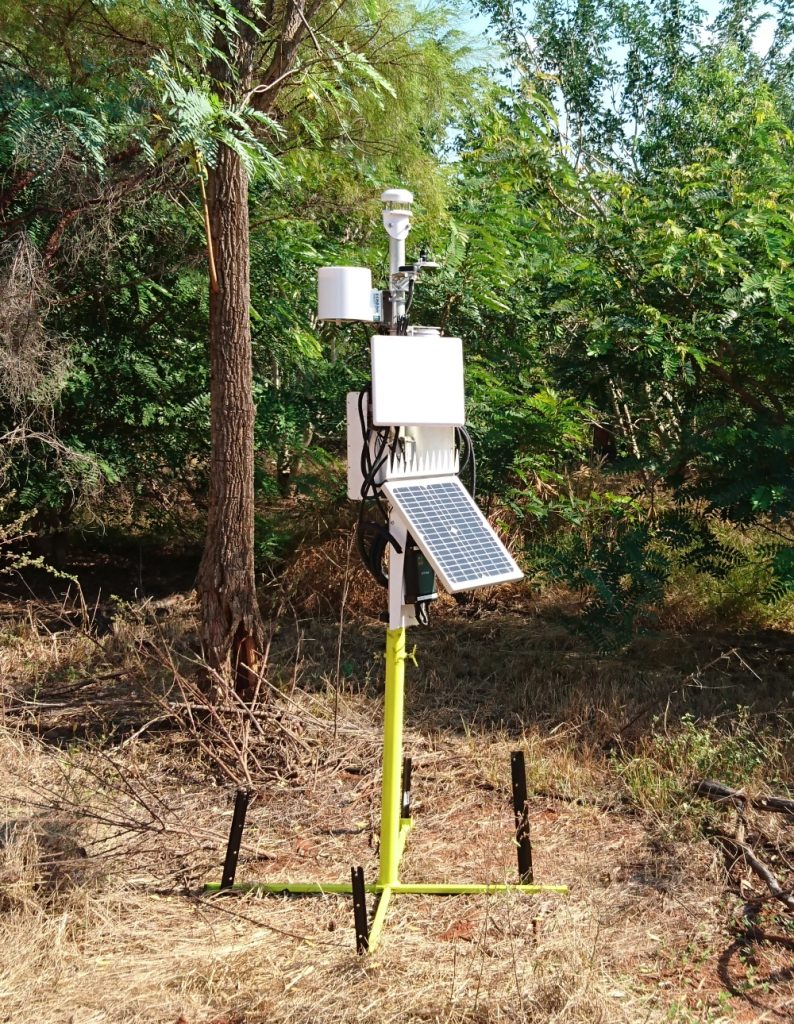Forest Monitoring Technologies
OVERVIEW
PRODUCTS
LOCATION
What to measure in a forest
Traditional forest measurement focused on measurement of biomass accumulation (tree growth) for commercial forestry. These same parameters are crucial for the measurement of carbon sequestration, urban forest valuation, ecosystem services provided by forests and selection of appropriate species for future climate scenarios.
Measurements including plant growth and water use, soil moisture and climate. ICT International provide solutions for these measurements with Internet of Things (IoT) connectivity, enabling near real-time relaying of measurements to decision makers.
How to measure the forest
Plant Growth and Plant Water Use:
- SFM1x Sap Flow Meter – the SFM1x sap flow sensor measures plant water use, in litres of water used per 10 minutes and per day continuously.
- PSY1 Psychrometer – the PSY1 Psychrometer measures Plant Water Potential (water stress) per 20 minutes continuously.
- Band Dendrometers – Dendrometers measure the circumference of trees; at a daily measurement these can measure the swelling or shrinkage as the tree undergoes stress. As a longer-term measurement, the increased circumference reflects the tree’s growth and subsequent carbon sequestration.
Soil Measurements
Appropriate soil measurements are important for understanding the influence on tree growth and lifespan, soil moisture is the most common measurement. More detailed measurements such as salinity, soil water potential and soil oxygen content all add value and understanding to the forest manager.
Soil Moisture
Soil moisture is typically measured in a profile of sensors at 6 to 8 depths. This gives an indication of plant water use, rooting depths, infiltration depths, hard layers and changes of rooting pattern over time. Sensors used are typically robust with lifetimes of 10 to 20 years whilst buried, such as the MP406.
Different applications require different sensors; where there is the risk of increased salinity (where runoff in an urban environment may contain increased salt content), capacitance sensors are often used as they can capture the salinity through EC measurements. However, these sensors have a 2 to 3 year life time and as such have limited value in long term monitoring.
Spatial variability in soil moisture in surface soil moisture is often very large in forests. Soil moisture sensors can now be spread spatially at low cost using IoT . Typically, these sensors would be buried at 30 cm depth for long term deployment and may be located near a rain gauge.
Soil water potential
Best measured with either a ceramic, which has limited lifetime, or robust sensors and logging systems with soil water content/soil water potential curve characteristics of the soil being monitored for conversion.
Climate Measurements in the Forest
- Solar radiation – energy input to drive evapotranspiration
- PAR radiation – photosynthetic active radiation
- Temperature
- Humidity
- Wind Speed
- Wind Direction
- Rainfall (typically 0.2 mm tip)
- Rainfall variability can be large across a forest catchment. Rain gauges can now be spread spatially at low cost using LoRa wireless systems across the catchment


